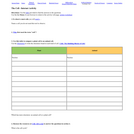
Internet scavenger hunt activity with worksheet
- Subject:
- Biology
- Life Science
- Material Type:
- Activity/Lab
- Assessment
- Provider:
- Mrs O's House: Cynthia J. O'Hora
- Date Added:
- 05/08/2013

Internet scavenger hunt activity with worksheet

This is a video and supporting worksheet covering membrane transport processes (Chapter 3).

Video tutorial for cellular respiration: overview, glycolysis, citric acid cycle and electron transport chain.

Outlines the proposed structure and properties of the plasma membrane in mammalian cells and identifies cell compartments that are separated from each other by at least one plasma membrane.
Andy Meal – lecturer in Biological Sciences, School of Nursing, Midwifery and Physiotherapy, University of Nottingham

As taught Semesters 1 and 2, 2011
This learning object describes the structure and function of mammalian cell organelles. It is used as part of the level 1 Biological Sciences module delivered by the School of Nursing, Midwifery and Physiotherapy.
Dr Andy Meal, Lecturer in Biological Sciences, School of Nursing, Midwifery and Physiotherapy
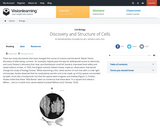
This lesson introduces the cell as the basic structural unit of life, and details modern cell theory.
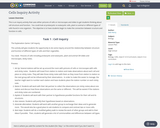
This is an inquiry activity that uses either pictures of cells or microscopes and slides to get students thinking about cell structure and function. You could look at prokaryotic vs eukaryotic cells, plant vs animal or different types of cells found in one organism. The objective is to have students begin to make the connection between sructure and function in cells.
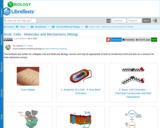
This textbook was written for collegiate Cell and Molecular Biology courses and may be appropriate at both an introductory level and also as a resource for more advanced courses.

In this course we will explore how altered metabolism drives cancer progression. Students will learn (1) how to read, discuss, and critically evaluate scientific findings in the primary research literature, (2) how scientists experimentally approach fundamental issues in biology and medicine, (3) how recent findings have challenged the traditional “textbook” understanding of metabolism and given us new insight into cancer, and (4) how a local pharmaceutical company is developing therapeutics to target cancer metabolism in an effort to revolutionize cancer therapy.
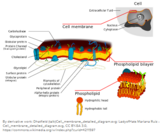
In this seminar you will create images of the biologically important structures of the cell membrane. The pictures will be translated to function. You will practice the terminology of these structures to associate their importance in the function of the cell membrane. The inquiry lab will allow you to design a model of the limitations of cell growth due to the cell membrane using water balloons.StandardsBIO.A.2.2.3 Compare and contrast the structure and function of carbohydrates, lipids, proteins, and nucleic acids in organisms.BIO.A.4.2.1 Explain how organisms maintain homeostasis (e.g., thermoregulation, water regulation, oxygen regulation).BIO.A.4.1.3 Describe how endoplasmic reticulum, Golgi apparatus, and other membrane-bound cellular organelles facilitate transport of materials within cells.BIO.A.4.1.2 Compare and contrast the mechanisms that transport materials across the plasma membrane (i.e., passive transport -- diffusion, osmosis, facilitated diffusion; active transport -- pumps, endocytosis, exocytosis).BIO.A.4.1.1 Describe how the structure of the plasma membrane allows it to function as a regulatory structure and/or protective barrier for a cell.
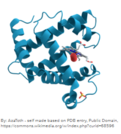
In this seminar, you will discover that proteins need additional processing after translation. You will determine what you know and what you need to know through a knowledge inventory and quiz. You will try your hand at gaming to learn protein modification and structure, or build an RNA molecule to create proteins.StandardsBIO.B.2.2.1 Describe how the processes of transcription and translation are similar in all organisms.BIO.B.2.2.2 Describe the role of ribosomes, endoplasmic reticulum, Golgi apparatus, and the nucleus in the production of specific types of proteins.BIO.B.2.3.1 Describe how genetic mutations alter the DNA sequence and may or may not affect phenotype (e.g., silent, nonsense, frame-shift).
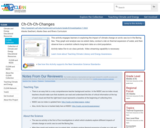
This activity engages learners in exploring the impact of climate change on arctic sea ice in the Bering Sea. They graph and analyze sea ice extent data, conduct a lab on thermal expansion of water, and then observe how a scientist collects long-term data on a bird population.
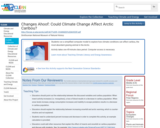
Students run a simplified computer model to explore how climate conditions can affect caribou, the most abundant grazing animal in the Arctic.
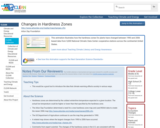
This animation illustrates how the hardiness zones for plants have changed between 1990 and 2006 based data from 5,000 National Climatic Data Center cooperative stations across the continental United States.
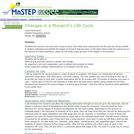
This activity will include the students observing the monarch life cycle inside the classroom, a field experience observing monarch life on a milkweed plant and drawing it, and back in the classroom students will make a pop-up book of the monarch's life cycle with a short description on each page.
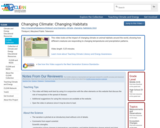
This video looks at the impact of changing climate on animal habitats around the world, showing how different creatures are responding to changing temperatures and precipitation patterns.

In this course, students will develop their abilities to expose ways that scientific knowledge has been shaped in contexts that are gendered, racialized, economically exploitative, and hetero-normative. This happens through a sequence of four projects that concern:
Interpretation of the cultural dimension of sciences
Climate change futures
Genomic citizenry
Students’ plans for ongoing practice
The course uses a Project-Based Learning format that allows students to shape their own directions of inquiry in each project, development of skills, and collegial support. Students’ learning will be guided by individualized bibliographies co-constructed with the instructors, the inquiries of the other students, and a set of tools and processes for literary analysis, inquiry, reflection, and support.
Acknowledgement
Professor Peter Taylor spent several years crafting the unique structure of the course, which is crucial to the way it was taught.
The Consortium for Graduate Studies in Gender, Culture, Women, and Sexuality
This course was taught as part of the Consortium for Graduate Studies in Gender, Culture, Women, and Sexuality (GCWS) at MIT. The GCWS brings together scholars and teachers at nine degree-granting institutions in the Boston area who are devoted to graduate teaching and research in Women’s Studies and to advance interdisciplinary Women’s Studies scholarship.
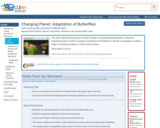
This video addresses the impact of climate change on several butterfly populations. Warming temperatures lead to shifts in location of populations of butterflies or die-offs of populations unable to adapt to changing conditions or shift to new locations.
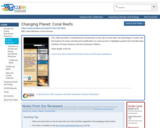
This video provides a comprehensive introduction to the role of coral reefs, the physiology of corals, and the impacts of ocean warming and acidification on coral survival. It highlights experts from the Bermuda Institute of Ocean Sciences and the University of Miami.
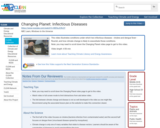
This video illustrates conditions under which two infectious diseases - cholera and dengue fever - flourish, and how climate change is likely to exacerbate those conditions. Note: you may need to scroll down the Changing Planet video page to get to this video.